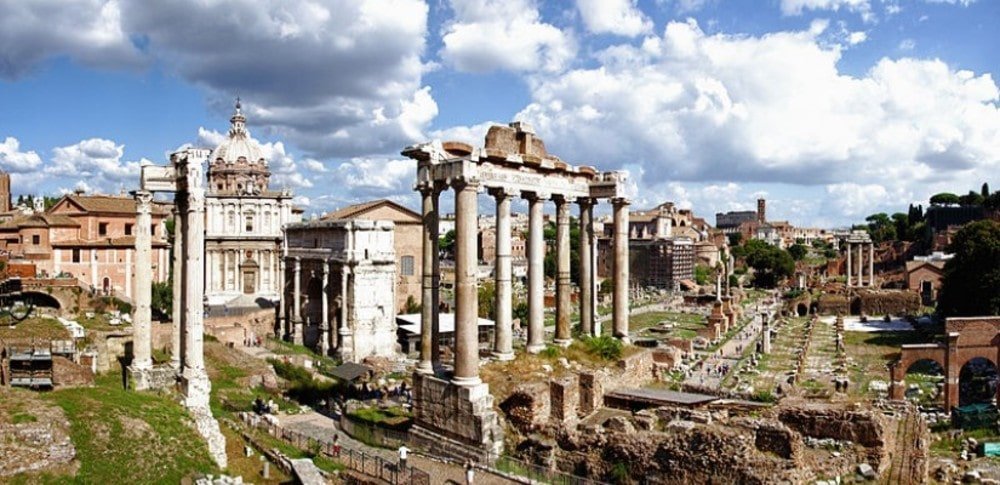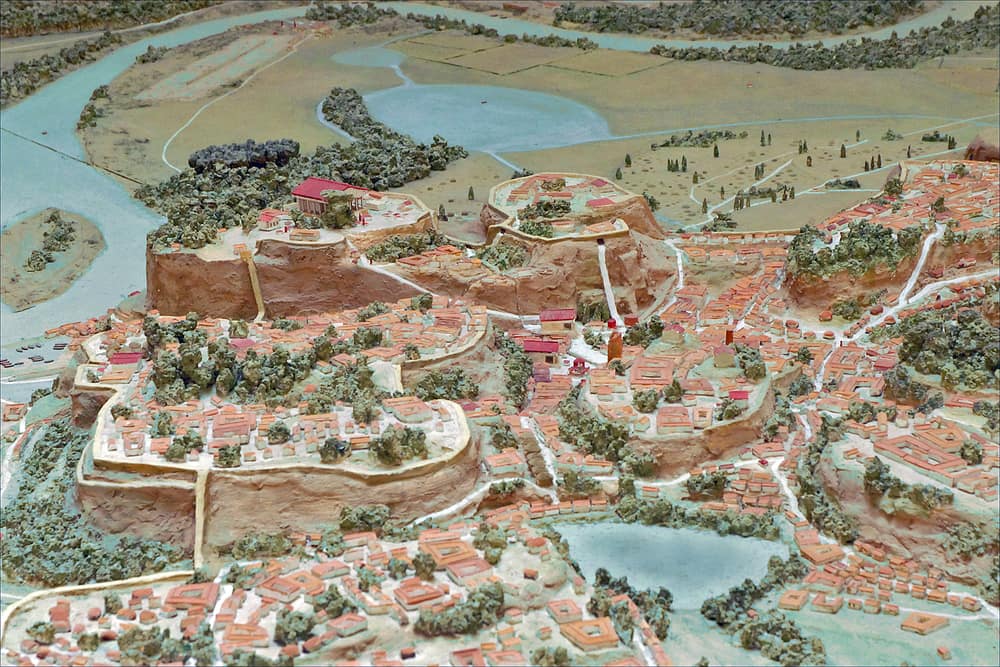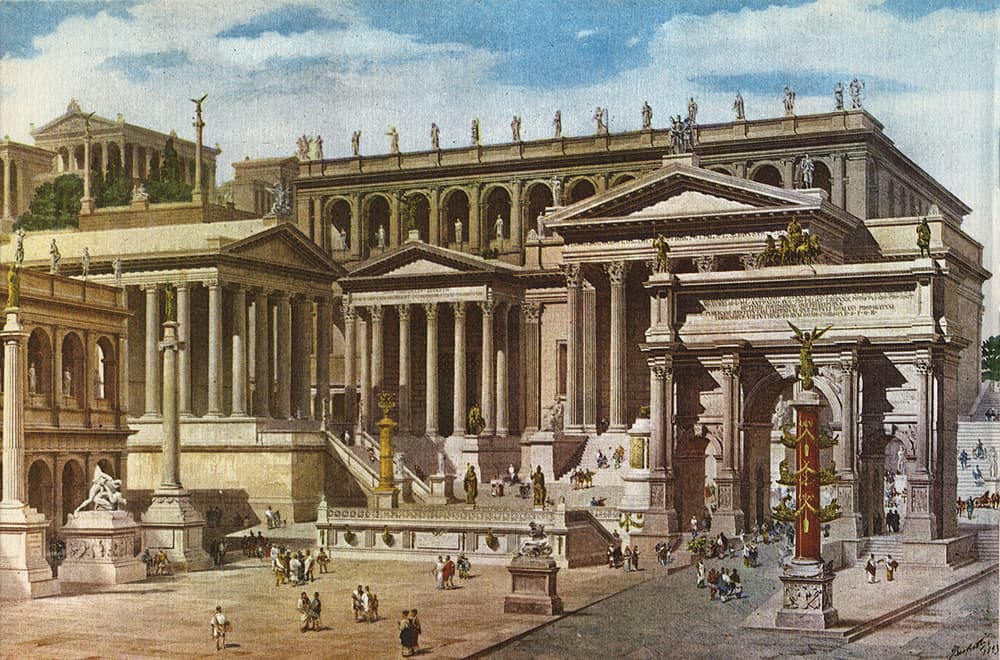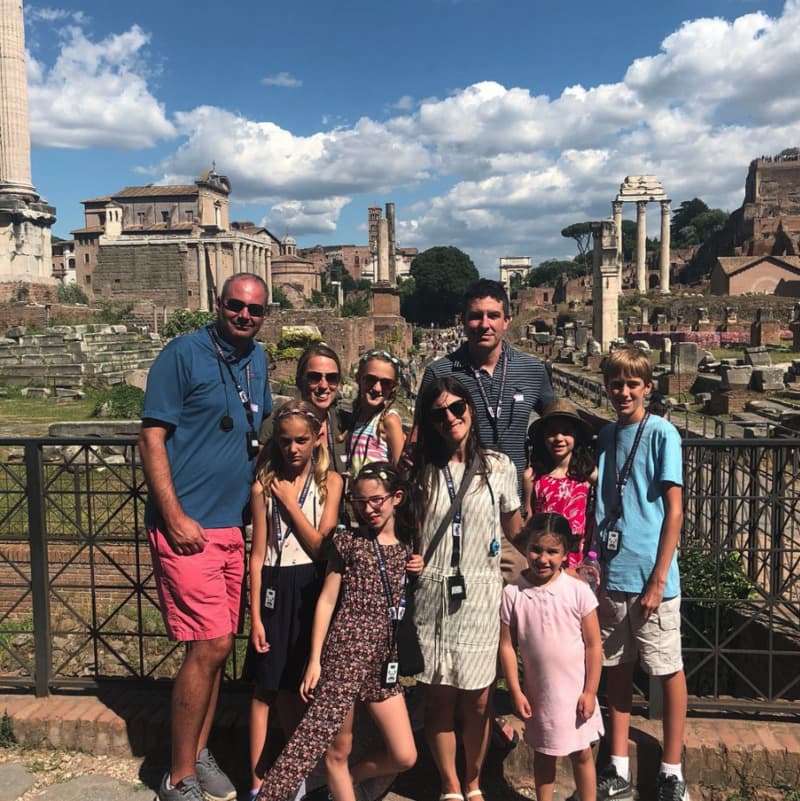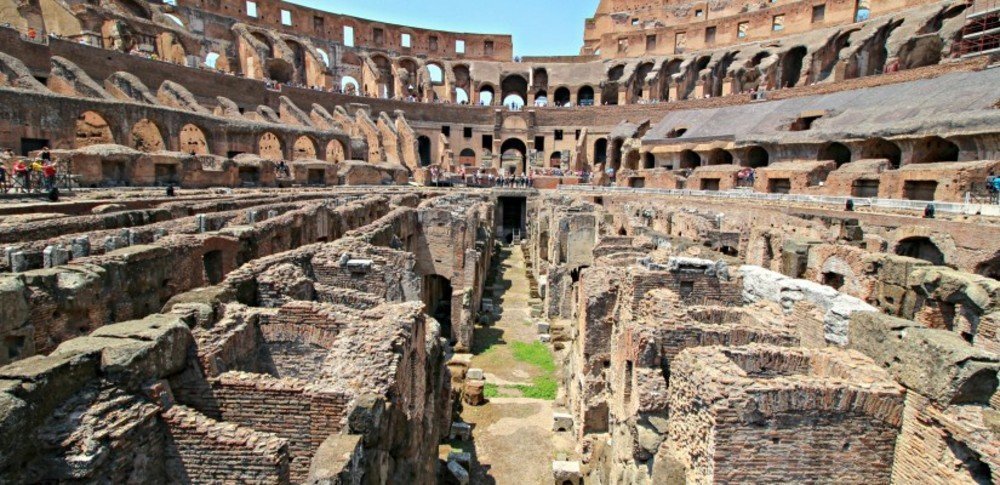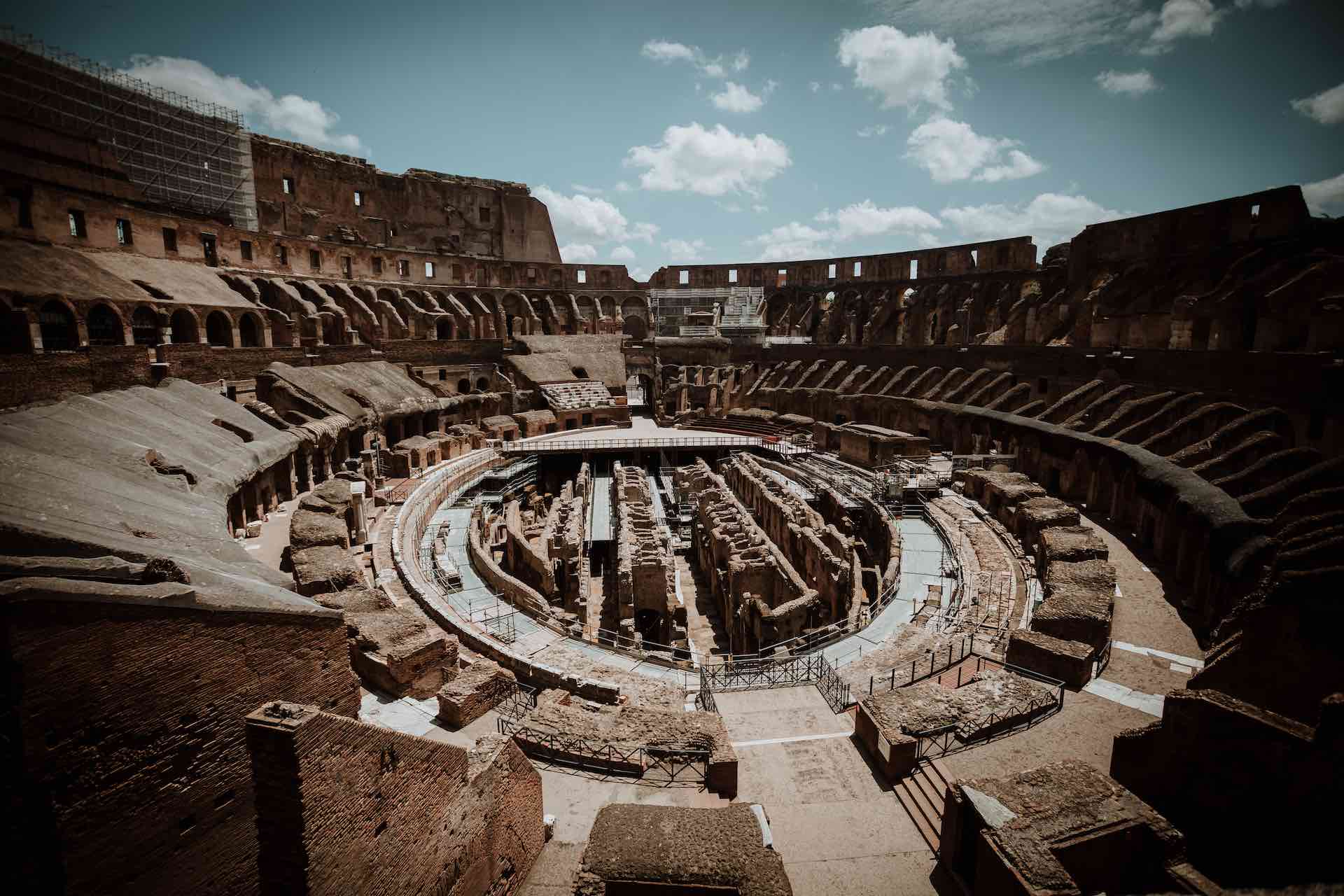For much of Rome’s history – from the time of the fabled king Romulus to the would-be king Julius Caesar – the Roman Forum lay at the beating heart of the ancient city. The Roman Forum served as a marketplace, open tribunal and, with its many temples, a center of worship.
But things weren’t always peaceful.
During the tumultuous civil wars of the Roman Republic, its many basilicas and tribunals were also scenes of sedition, scandals, and acts of political intrigue.
It was here that the Senate plotted the assassination of Julius Caesar, and through here that some of Caesar’s imperial successors were dragged to their death and executed by the mob. What makes this history all the more surprising is that the Roman Forum was once nothing more than uninhabitable swampland.
History
From its earliest history, the Roman Forum served a religious purpose. In the shadow of the Temple of Saturn stood the home of the Pontifex Maximus and his priestesses, the Vestal Virgins. By tending to the sacred hearth fire of Vesta, these young women ensured the survival of the Roman state. Rarely did the neglect their task. But when they did, the consequences were fatal.
During the course of the Roman Republic, returning generals adorned the Roman Forum with monuments funded by their conquests. Borne in chariots, triumphant generals would process along the Via Sacra, throwing spoils to adulating crowds as they made their way to the Capitoline. The Arch of Titus, at the Roman Forum’s entrance, shows precisely this scene on its inner reliefs.
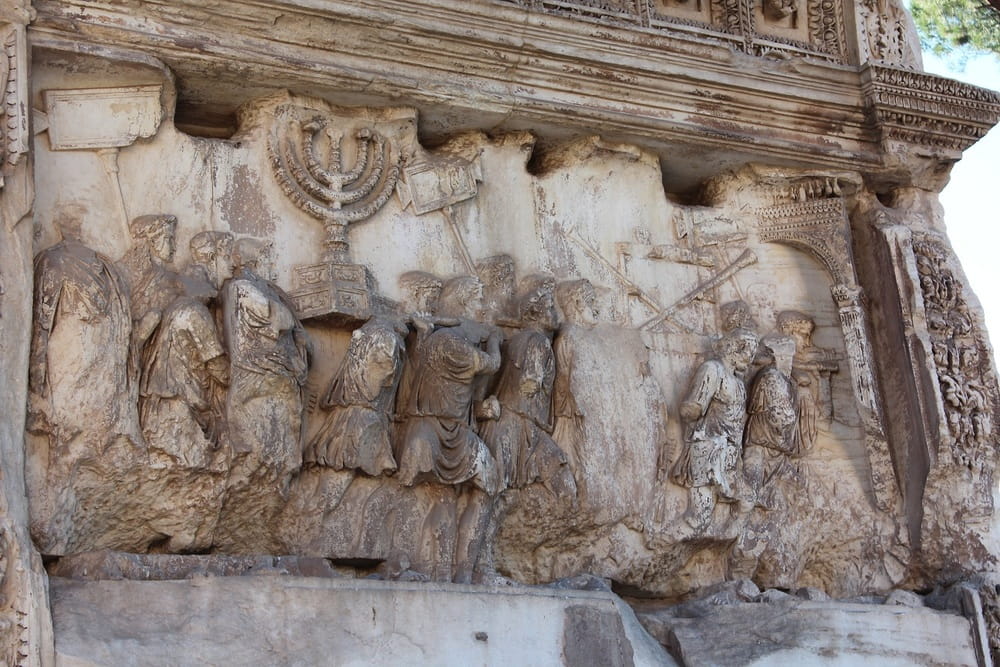
Relief from the Arch of Titus
For the five centuries spanning from the 6th century, the numerous temples, basilicae, speaking platforms (rostrae) and council chambers sprung up across the Roman Forum. The Republic’s most prestigious families all left their trace. The Basilica Aemilia was one. But a more famous family, Caesar’s Julian family, have left a more enduring legacy - the Basilica Julia.
The Roman Forum in the Age of Constantine (4th century AD)
By the time of Julius Caesar, the Roman Forum had become cluttered with monuments. The lacspace drove Caesar and his successors to build their own fora (the Imperial Fora) adjacent to the old Forum. But its decline didn’t spell its death. Subsequent emperors continued to adorn it. One of the last examples was the Arch of Septimius Severus.
With the rise of Christianity, many monuments in the Roman Forum were converted into churches. The Church of Saint Cosmas and Damian was one, transformed from a temple to the emperor Romulus (though it has kept its ancient bronze doors). The Church of Santa Maria Antiqua was another.
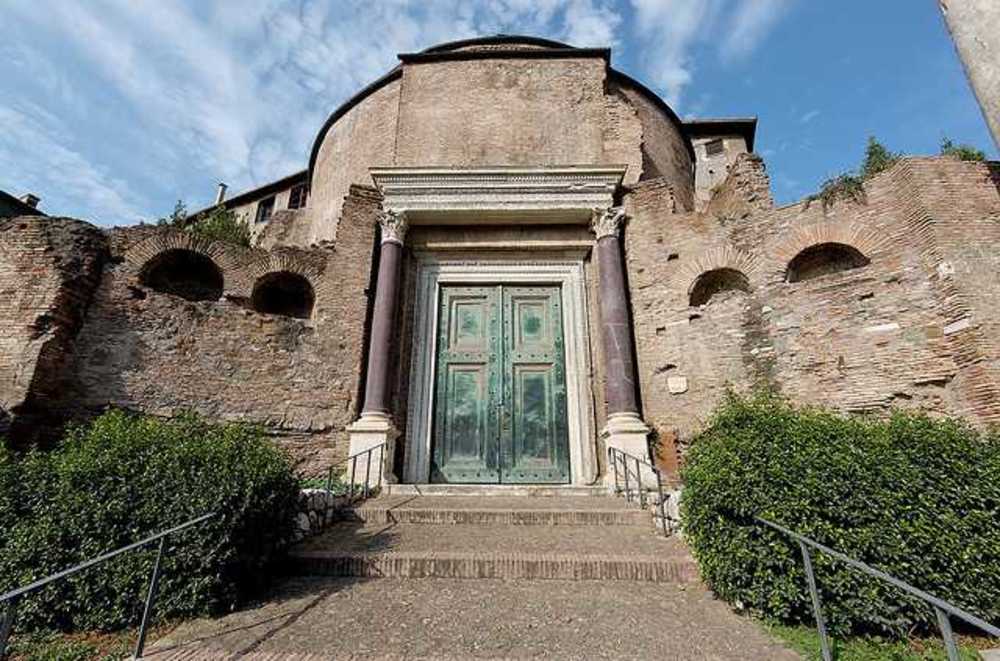
Temple of Romulus
Discover the Roman Forum and unearth its hidden secrets through one of our Rome Tours. Explore the extended site on our classic ancient Rome with Colosseum tour. Or explore the Roman Forum after unearthing the secrets buried beneath the Colosseum on our Colosseum VIP Underground tour.
Useful Info
OPENING HOURS:
8:30 AM - One hour before sunset - Daily- Because the Lapis Niger is smaller than most of the Forum’s monuments, it’s easy to miss. But this small monument is the oldest and most fascinating of all the Forum’s treasures. For tradition holds it was the burial place of Rome’s mythical first king Romulus. And recent excavations which are shedding light on the the site’s antiquity may just prove tradition right.
- It sounds obvious enough, but make sure to visit the Roman Forum with one of our native guides. The Forum may seem rich enough in ruins that you can explore it alone. But doing so is unrewarding, provide little context or illumination as to what you’re seeing.
FAQs
When was the Roman Forum built?
Building activity in the Roman Forum got underway in the 6th century BC, once this former swampland had been drained by the Cloaca Maxima or 'Great Drain.'
There's a big difference between the Forum of the 6th century BC and the site you see today.
Today's Roman Forum is a veritable mish-mash of historical layers. Its oldest monument, the Lapis Niger (Black Stone) contains an inscription from the 6th century BC: the earliest Latin inscription known to date. Its most recent monument, the Column of Phocas, was erected in 608 AD.
Meaning the chronological difference between the earliest- and latest- known monuments spans some 1,200 years.
What was the Roman Forum used for?
At first, the Roman Forum functioned as an open-air market. Soon it became the site of the Comitium, a public gathering space, where the Romans held tribunals, met for political assemblies, and where the most eminent citizens delivered speeches.
By the time of Julius Caesar (the first half of the 1st century BC), the Roman Forum had become cluttered with temples, basilicas, podiums, and meeting spaces. This lack of space necessitated the construction of what we call the 'imperial fora' (built by Roman emperors during the Roman Empire).
Caesar's Forum was the first, soon to be followed by the fora of Augustus, Vespasian, Domitian, Nerva and Trajan just to name a few. The Roman Forum was still populated with monuments from time to time, the Arch of Septimius Severus being a relatively late example. But as the city of Rome grew, so did the focus of its attention shift away from its nucleus.
What did the Roman Forum look like?
A good question, but difficult as the Forum went through so many stages.
As already mentioned, the Roman Forum started off as swampland, an area of uninhabitable terrain between the Palatine and Capitoline hills. Being low-lying, it was susceptible to flooding, though the Etruscans resolved this problem around 600 BC when they built the Cloaca Maxima or 'Great Drain.'
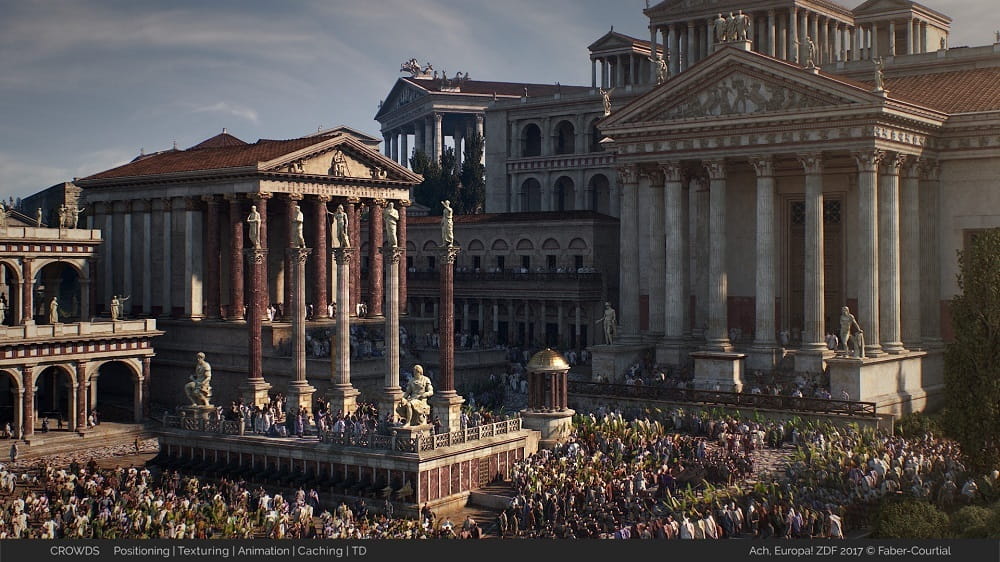
The Roman Forum in the 4th century AD

